This is a fantastic moment to start working for yourself.
Thanks to the internet and new AI tools, finding customers and building simple products is easier than it’s ever been, and the rewards for taking the leap — both for your lifestyle and bank account — are many.
It’s already taking off, and I’m convinced that independent work (where you start a company to sell a service or simple product) will continue it’s upward trend line.
The catch? Getting started is really hard.
This guide is for the tech folks out there who have the twinkle of entrepreneurship in their eyes, but feel a little lost on how exactly how to get started.
Before we jump in to today’s content, I’m excited to share that we’re launching the On Work Podcast! To quote my podcast bro brethren, let’s gooooooo!
This pod is an extension of the ideas we explore in this Substack — it’s for tech professionals leaving the 9 to 5 and striking out on their own, and I’m genuinely excited to bring together the entrepreneurs, operators, and experts behind this movement. These are people building fractional careers, tech-enabled services, working as creators — all-in building independent, entrepreneurial lives.
The first episode of On Work is dropping next week, and it’s an interview with HG member Jen Burton, a true legend in the startup customer support world — I think you’ll love her story of how she turned getting laid off into the jump start for her fractional entrepreneurship.
Before Jen’s episode lands next week, you’ll find a show trailer on what I hope to explore in the pod. I’d love to hear from you on what stands out, and you’d have my eternal gratitude if you subscribed in as an early supporter! It really helps us get this message out there.
Now onto today’s issue.
Who this guide is for
You’re a big tech or tech startup leader who has dreamt of entrepreneurship. You have a sense that the path is filled with incredible lessons for your own human development, and if handled right and if you get lucky, also filled with a great financial outcome.
You’ve probably also thought about the difference between VC backed entrepreneurship and other types of entrepreneurship. You’ve tossed around notions of risk and personal capital, time and emotional investment, likelihood of a good outcome. You’ve also likely been subject to The Big VC Media Machine, one that pumps our feeds with stories of their version of entrepreneurship and success. It’s hard to see past.
Big VC’s version of entrepreneurship is a great path for lots of people for lots of reasons — I’m married to a founder on that path, and our family will benefit if he and his team can figure it out. I’ve also been an early employee inside a startup on that path, and spent 5 years growing it to an acquisition.
For all those reasons, it took me, and maybe also you, a long time to realize the other type of tech entrepreneurship. A version where you own 100% of the business, control your schedule, work with a small team or no team at all, and have a much higher chance of success. A version where you build a service based business, a tech enabled service product, or monetize your skillsets. Perhaps working as a fractional or consultant, building an agency, selling a simple tech product, or working as a coach or advisor or creator or I could go on with the word soup.
You have a set of skills you’re well known for, and a solid list of accomplishments to back it up, like experience holding big titles, or working for respected companies, or metrics hit on your resume. You also have a brain capable of handling complexity. You’ve watched your smart friends doing a version of this, and you think: I could do that too.
With Big VC’s version of entrepreneurship, the outcomes are alluring, and the financial resources are critical for many businesses to exist, but the tradeoffs to mental health, time with family and friends, and overall life well roundedness are also very real. I had to work through the hangover of VC-backed-startup-employment for several years until I was settled again, and I feel these tradeoffs inside our family everyday as my husband actively gives it a shot.
So, great: you want the other version. The catch here? You don’t totally know how to get started. Or perhaps, you’ve started on the journey, but feel a little stuck. This guide is for you.
(Notably, this is not for people who want to start a more traditional tech company — for the best free advice there, plus some universal advice on starting any startup, turn to YC.)
Why listen to me
I’ve done it myself, and I’ve helped a few hundred people do this inside Hello Generalist. Today, all of my income comes from working independently, and, for the most part, it grows every month.
Does this sound like a smarmy pitch? I hope not. I mean it earnestly: I’ve seen the patterns for what works and what doesn’t work over and over again.
I quit my job in July 2022, and made my first independent income in August by playing with a few models: I worked fractionally for founder friends, I launched a small online course through Maven, and I did 1:1 coaching for startup ops leaders. Yolo-quitting my job and then building 3 streams of income at once was chaotic and ill-advised, and it was a period of steep learning. But I did right by my customers, and got to feel the wildly addictive hit of making my own money.
From there, I realized that my smartest friends also wanted to do part-time work with startups, so I launched Hello Generalist, which I consider a tech-enabled service business. In HG’s first 2 years, we’ve paid out several million dollars in earnings to people who booked fractional work through us. Most of them were starting independent work for the first time like me.
HG really only works because of that last sentence: Inside HG, we help the newbies figure out what they could sell so we could go sell it on their behalf to our startup customers. At first, I took 1:1 calls with people to figure this out with them, then later turned it into a group onboarding session.
I’ve learned that there’a a simple secret sauce here. To get started, you need to 1. Get your head right, 2. Define a problem that you’re uniquely and obviously suited to solve, and 3. As soon as possible, and most importantly of all three steps, go talk to customers.
If you follow these steps, you will book work. Of course, it’s hard to do, and extra hard to do alone. So try to find some buds to do it alongside, and go easy on yourself throughout the process.
Here’s the breakdown.
Step 1 — Get your head right
The goal of this first step is to get clear on what you want and why you want it, and to have active conversations with your friends and family to get their support. Without a strong why, it’s hard to push through tough times. Without clarity on what you want, it’s hard to have a starting hypothesis to work on. And without support of your loved ones, it can be a hand-banging-against-the-wall-alone-in-your-room experience.
More, I think there are several important truths to internalize as part of this step.
This is a two-way door. Just because you’re exploring working independently doesn’t mean you will do this forever. Just because you book one or two customers doesn’t mean that this has to be your new full-time income source.
Success can mean earning a few hundred dollars a month, and success can also mean that you try it and learn you don’t like it.
There is no one right way to get started other than talking to potential customers. Said more plainly, talking to potential customers is the only requirement. They will teach you everything else you need to figure out. In fact, this whole guide could be cut down to one sentence: Go talk to customers.
Do not let LinkedIn fool you: posting on LinkedIn is not required, nor do you have to make TikToks, nor do you have to “build a personal brand.” It’s one of many strategies to get in front of customers. You’ll have to get good at one or two strategies here, but it doesn’t have to be internet fame.
You can do this while you have a full-time job, or you can do this with your time fully dedicated to it. There’s no bad time to start.
You will feel underprepared and imperfect for a long time, especially since you’re probably transitioning from a job where you’re used to being excellent everyday. You will not totally nail your pitch or positioning. You will not totally nail the value of your service. None of that needs to be perfect in order to book one customer. Mental strength here is about adopting a beginners mindset, one that is geared toward learning and curiosity and discovery. Perfection is not the goal. The only validation that matters is that you start with one paying customer.
You might take to a journal for this next step — The goal here is to get at least somewhat clear on your what and your why. Here are the prompts to get you started:
Why are you doing this?
What do you want for your income, lifestyle, and professional future? Said a simpler way, what do you want?
What do you envision your typical day and week looking like?
As you get started, what are you willing to give up to achieve this?
As you get started, what are the boundaries of what you’re not willing to give up?
What are the constraints you want to set around this? Do you need to maintain a certain income level while exploring? Is there a certain amount of money you’re willing to burn? Are there time constraints?
Am I telling myself untrue stories about my inability to do this? What are the fears and anxieties I’m experiencing? What do those feelings have to tell me? What is actually true behind the feeling?
It’s also really helpful to talk about these prompts with your partner, or some trusted friends. Talking through it makes for a really fun dinnertime chat, and especially if you’re co-living with someone who depends on you financially, you can get their buy-in here too. Mostly, the goal is to bring them along for the ride so you have immediate support and accountability.
Your what and your why will change and wiggle and morph over time, and that’s a good thing. But the point is to start with a map.
This will also make it very real for you.
Seriously. Don’t skip this step.
Step 2 — Define the problem
The goal of this step is to build a hypothesis on what problem you’re going to solve for customers, so you can then talk to potential customers about it in Step 3.
If you’re a tech leader, the easiest way to start working for yourself is to sell your skills in some form factor to other companies or people, so I’ll start with that in mind. But this process also applies if you’re ready to build some sort of agency, tech-enabled service, or simple product.
There are 4 sub-steps to back you into the full picture:
First, get clear on what skills you could, and want to, monetize
These should be the skills you’re most well known for, have proof on your resume from using, and reflect your past titles and teams.
If you’re a 20 year finance person, this is easier to do than if you’re a “3x founder / 2x early startup hire” generalist, but do the work to specifically name skills that you’re top 5% in. Specific skills where you’re so good that someone would pay you real life money for them.
Second, get clear on who your ideal customer is
Similar to the skills exercise, your ideal customer should be in environments that you already have proven experience and credibility succeeding inside (like industry, funding environment or stage, plus other things like team or customer demographics, or issues they’re likely facing).
Because you’re likely selling a skill, among the 1000s of other independent workers out there, they should look at your experience and think, “My God! This person is obviously and uniquely suited to help us!”
If you can’t imagine a customer thinking that, try getting more specific about who this customer is.
Third, define the problems that you could solve with those skills for that customer
You need to think about what problems your customer has, and what you could do to help them with your skills. Put simply, people will pay you to solve their problems, so you need to get clear on the problems you’re trying to solve.
Your goal is for a customer to be hurting so badly that they pay you real life money for your skills — and like the exclamation above, they should look at your skills, background, and credibility, and think that it’s a no brainer put money behind solving this problem.
So, you need to form a hypothesis on the problems you’re uniquely and obviously suited to solve with those skills for that customer. Make a list of what you think these are, adding a layer on what problems you think are “Nice to Solve vs MUST Solves.” As you talk to potential customers, you’ll cross some of these off and add more on.
Last, start naming the business models that would support this
A few business models should naturally emerge. Like, that it would make sense to do that work fractionally, or to build a simple product around it, or to teach others how to do it. Name them, and make some notes of what sounds exciting and worthwhile to you.
Then, orient around them a bit: What would it take to stand up that model? Is there a going rate for that work? How much scale would it take to meet your financial goals? Is there natural leverage you have in one or two?
Here’s the kicker to these 4 sub-steps: You get 2 hours to work on this in total, then you have to put it down. Yes, 2 hours. It’s arbitrary, but it’s also enough time to be both thoughtful, and still constrained so you don’t end up wasting time with fake work alone in your room that doesn’t actually book you customers. If you really need more time, put it down, and go take a walk between work sessions.
Remember: this is your hypothesis. The only thing that actually matters is putting it in front of real potential customers and seeing if they’d pay you for it or not.
What not to do after this step: Do not make the mistake that you’re ready to start building product or advertising without talking to real potential customers first. Do not get distracted by the box-checking-administrative-work that feels good to accomplish, but doesn’t help you validate this (classic feel-good-box-checking includes: opening a bank account, registering an EIN, writing copy for your website, designing a logo).
What to do after this step: Face the task head on (and all the fears and anxieties that might come with it) and start talking to customers.
I will write future posts with frameworks on how to do these 4 steps in depth, but for now, let’s leave it here.
Step 3 — Talk to people you know
If you’re ahead of the game, you’ve already been socializing your ideas with trusted friends and peers. But if you haven’t, you’re definitely ready now.
You start with the people you already know, and who already know your good work, because they’re most likely to want to help you, and hopefully, also most likely to give you straight advice.
They’ll also be — and I almost guarantee you of this — the people who will first hire you, or introduce you to the people who will first hire you. Seriously. I very, very rarely hear an exception to this.
Make a list of the people you think would give you this type of help, then get in touch with them.
Ask for the call by sending a simple message like, “I’m working on some new projects, and I’d be really grateful for your input. Do you have 30 minutes?” Or, “I’m trying to do [insert your what here], and could really your use advice because [reason you want it].” It doesn’t have to be complicated. Most people say yes to these calls.
The important bit to this step is that you’re not allowed to sell them, even if they fit your target customer profile. The goal of these calls is to rekindle your relationship, get validation and feedback, build momentum, and build confidence before talking to people you don’t know.
Given my statement above, the funny side effect is that these people will end up hiring you or introducing you to the people who will, but it’s best practice not to try and run a fake-out call. So, do what you say: your honest goal should be to get friendly feedback and guidance.
To feel extra good going into these calls, you might get comfy with what I call “the spiel.” It’s the light script you use to open the call and intro what you’re trying to do, plus some pointed questions you have for them to help you validate this. This is the prep work that gives you confidence you won’t look like a total doofus with them (though these people know you and love you, and it’s unlikely you could ever look like a total doofus to them regardless).
So, you start the call with your spiel, use your questions to guide the conversation, and you end the call with an important ask, “Who else do you know that I should talk to?”
Even if one call results in one introduction to a target customer, then ta-da, you have a pipeline. And if not, then you definitely have input and feedback on your hypothesis to loop back to.
Step 4 — Talk to your target customers
By this point, you have a hypothesis, some feedback on it, and momentum. It’s time to talk to potential customers you haven’t met before.
Make a list of who you think these people are. There’s a hundred databases online, but start with a more personal approach: Do you have leverage somewhere? Are you part of some network? Do you happen to be BFFs with a YC founder or are you a member of a big online community where your customers hang out? If you’re building off your core skills and background, this is hopefully pretty aligned already.
Find a way to get in touch with those people, ideally through warm introductions, but cold outreach also works (don’t use AI for outreach at this point — do it yourself so you can learn about what works and doesn’t work. Plus, if AI gets weird, you’d lose the relationship. ).
Once you’re on a call, your goal is to do what sales people call discovery, which is a fancy way of saying that you want to ask a bunch of questions to learn about your potential customer. And because you don’t totally have a product to sell yet, your goal is also to validate that what you want to build solves a genuine, painful problem for these people.
The intro spiel here is simple, “It’s great to meet you. [Friend’s name] thought we should connect because [reason], and that’s really similar to what I’m building right now. I’m curious to learn more about you/your company, and thought we could explore if we’re a good fit to work together. I’m also early in building this, and your feedback is incredibly valuable.”
Then, have a 2 - 3 sentence script prepared on how to introduce yourself. Do not monologue, but instead, hit on the relevant and credibility building bits in your history. This is helpful to practice a few times, as it’s really easy to talk about yourself too much. Your goal is to tee up why you’re a worthwhile call.
Your primary goal for the rest of the call is to ask questions, and try to keep them talking. If you’re really good, they talk for 80% of the time. Learn about their business and their problems. Ask them to share screen. Prod to go deeper. You’re listening for extreme pain on the problems you’re best suited to solve, and why they haven’t been able to crack it yet.
Your secondary goal is to define next steps with them for how you might start working together. Once you have the full picture from all the question asking, you then interject with “Well, here’s what I do. [share what you do]. [share when you’ve done it before]. I think we could do [xyz] together. Would you want to explore that?”
And then sit there, shut up, and wait for a response. If they say anything but a version of “OMG I WOULD LITERALLY LOVE THAT I’M OBSESSED WITH YOU,” then you’ll redirect the call, offering help in other ways, like sending them articles or making introductions to other people, and thanking them profusely for helping you understand more about the problem. That’s to say: If they don’t want to work with you, don’t force it. Instead, give as much as you can to help them for free.
If they’re stoked to explore more with you, then set next steps.
Especially early on, you’ll get a good number of middling responses. Don’t be discouraged. Remember that the gold here is the free product advice from potential customers. Address it, then start the loop over again.
Step 5 — Book ‘em and treat ‘em right
Scoping, pricing, signing. All posts in their own right. But put simply, once you have an interested customer, you agree on what you’ll do for them, set a price, then sign a written document that makes all that clear. AI is a great thought partner here for building simple, quality templates. For collecting money, either use a direct bank transfer product, or Stripe.
Beyond that, don’t overthink the back office work too much. Assuming that you enjoy this work and are good at it, you’ll probably want to book a second paying customer in the near future. Then it’s smart to do some basic back office set up, like creating an EIN, establishing an LLC, and opening a free business checking account. Those three steps will make your taxes easier by separating self-employment income from any other income. They’ll also help you manage invoicing, as most business checking account accounts have free invoicing tools built-in.
But for now, focus on delivering a fantastic experience for this first customer. Do the things you already know how to do: Live up to the goals you set, ship high quality work, be a nice person to work with. These first customers are your future referrals, case studies, and testimonials. So do right by them and they will do right by you.
Often, I hear stories of people realizing that the Scope they originally built is actually not at all what the company needs, and gladly throw the Scope out the window in favor of just doing right by the team. Since you’re new at this, your goal is to learn about what your customer really needs, doing right by them at all costs along the way. Your goal is not necessarily to hold true to a piece of paper you wrote two months ago.
Most people who take this journey describe their first few customers being filled with lessons: charging too little, writing a wrong scope, booking too many people at once, getting caught up in the busy work too soon, totally throwing out one business model in favor of another. Unless you’re super unique, this will be you too. So, just do right by the first precious customers who took a chance on you, and remember: learning is the point at this stage of your business, and most of us have to live those lessons before we figure out the longterm play.
-
And with a big hand flourish — Ta da! Congratulations, you are officially working for yourself.
Seriously, if you’re able to get to one paying customer, you’re already ahead of where most people get, which is to have an idea, and do nothing about it. This is hard, thoughtful, emotional work, and you should take a moment to celebrate that you got there. The work will continue to be hard, but you’ve done me proud by getting this far.
Before we head out, some shameless plugs. If you’re into the ideas I write about, here’s a few ways for us to work together:
Are you a startup who’s curious about fractional hiring? Check out Hello Generalist, or book a call with me here.
Are you a startup operations pro who wants to join HG’s network? We’re on a waitlist at the moment, but welcome your application.
Want 1:1 time with me to talk about building your independent work? I’ll show up judgement free and candid, and make this hour a super valuable one for you. You can read more and book that here.
And check out the On Work Podcast to hear from other independent workers — you can subscribe on Spotify and YouTube.
Be well! Until next week, Shaina


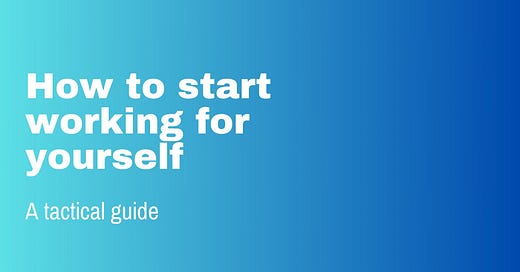


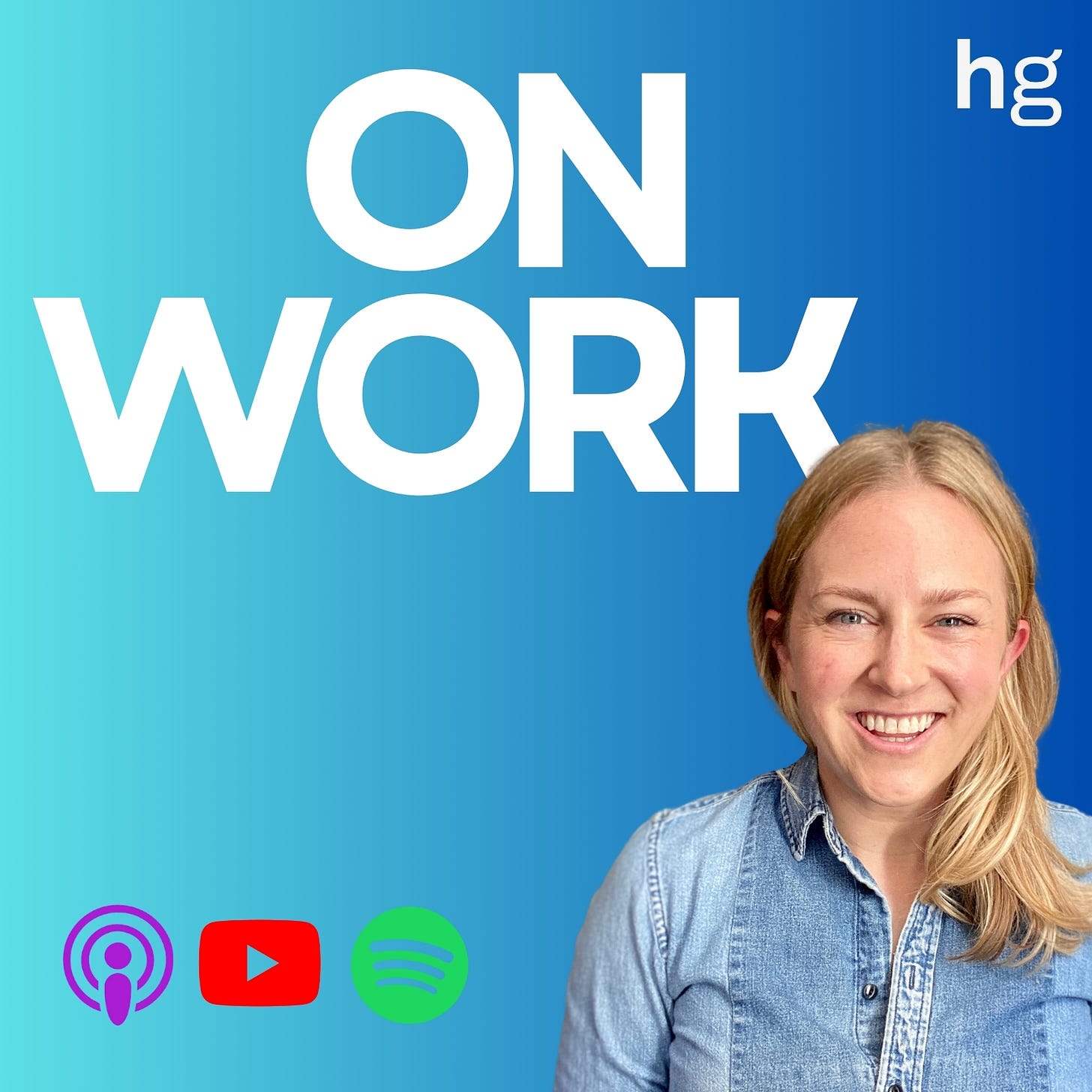



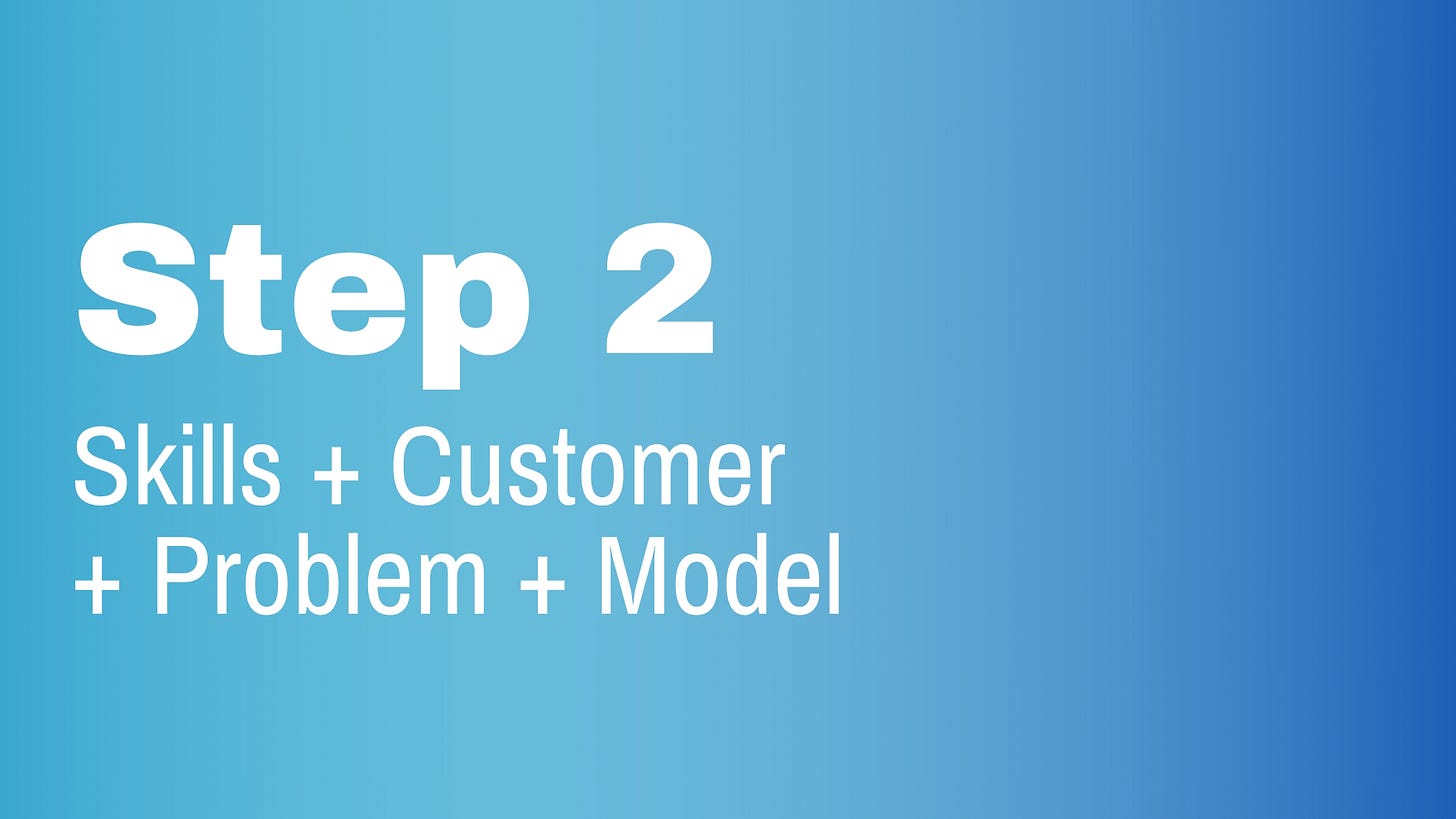
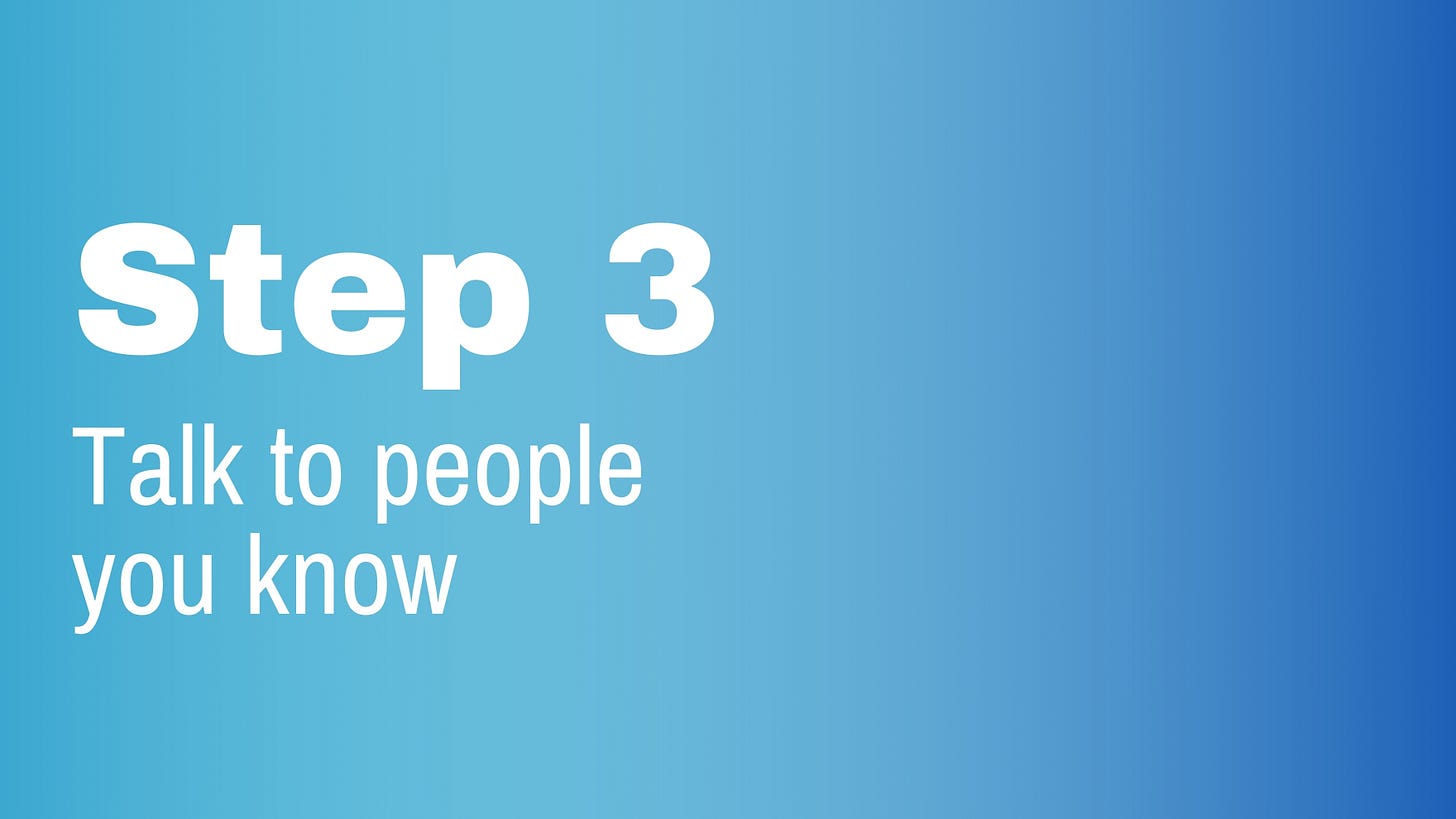
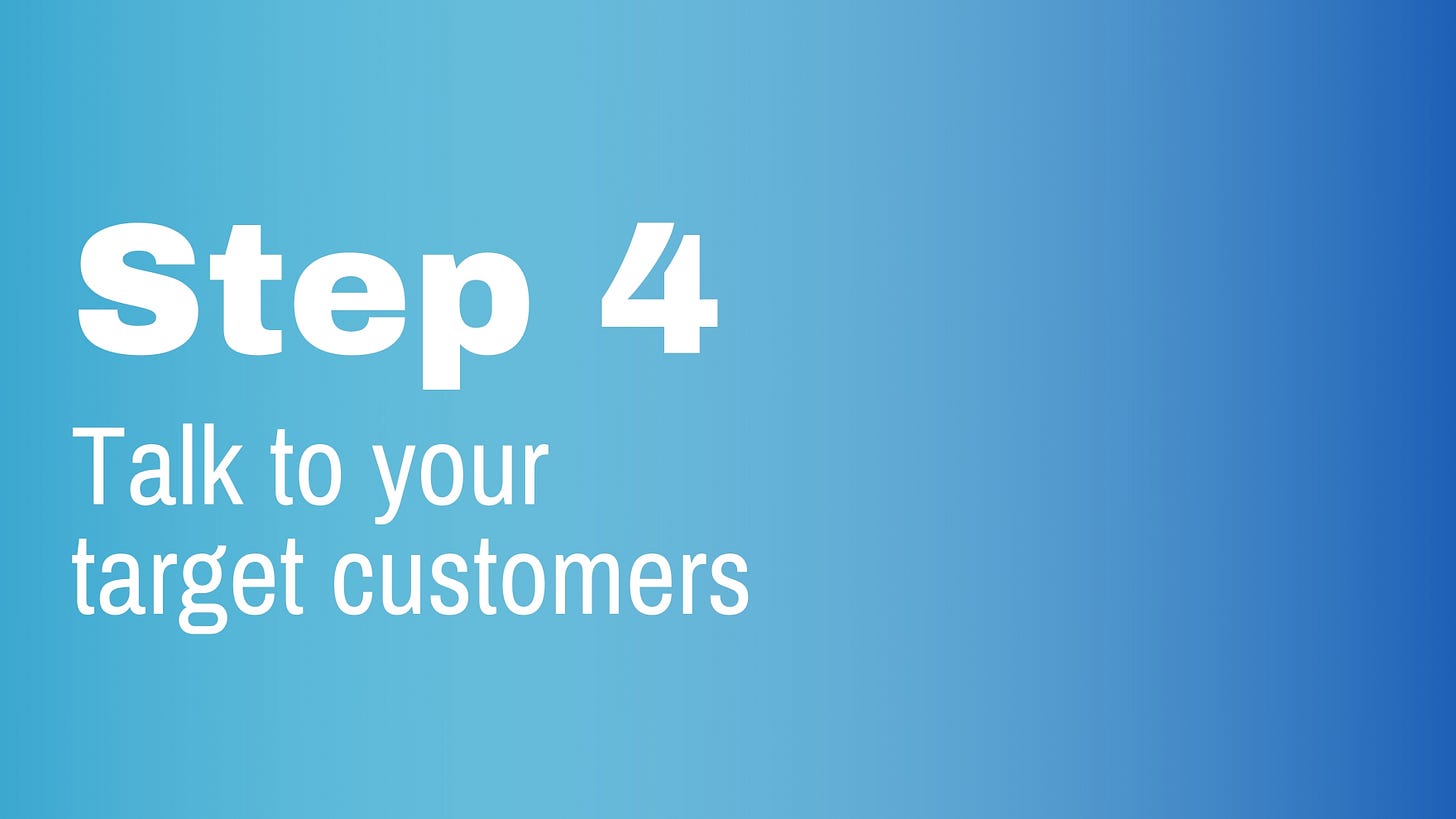
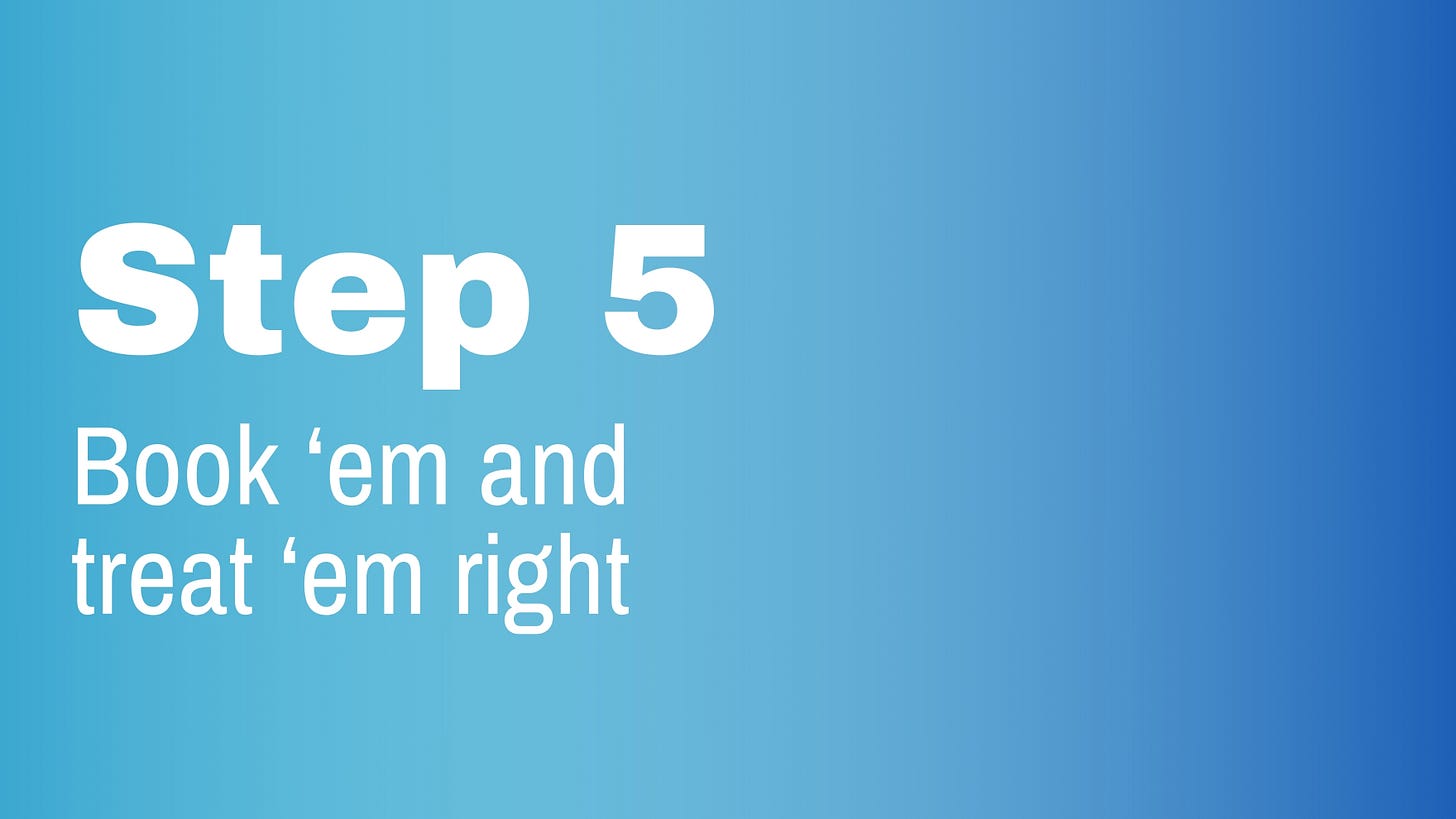
What a great piece. This is gold! Thanks for sharing.
This was a FANTASTIC read Shaina. One of the best packaged, actionable ways to start gaining new clients that I have seen! You gave methods to the madness and gave us choices based on our goals and personality. You also baked in accountability and the notion that we are on the hook for our own success.